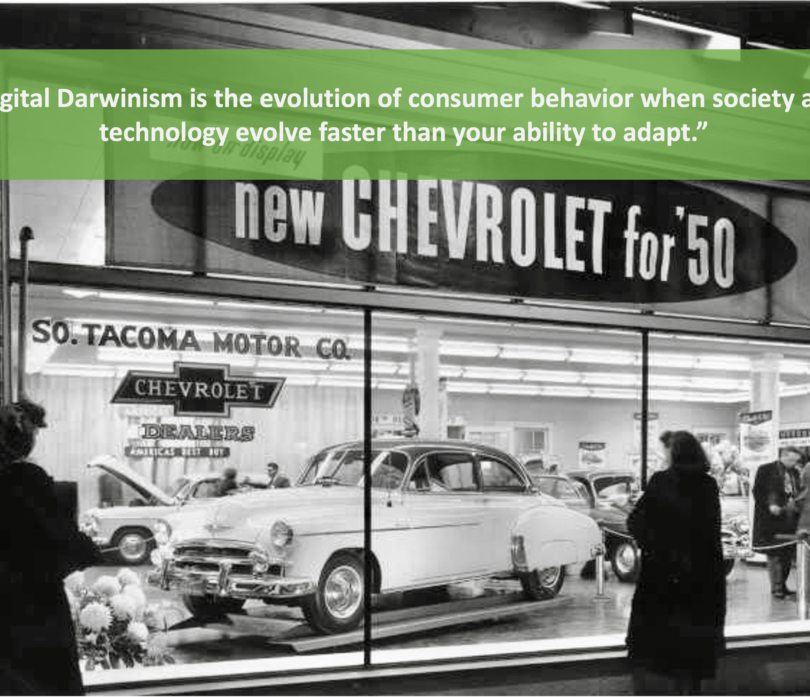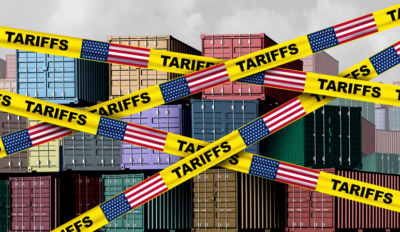Automotive Digital Retailing: Upsetting The Status Quo Has Its Challenges

Dealers everywhere have found themselves navigating a new normal…a new normal accelerated by the pandemic. But it is important to understand that the new way to retail digitally isn’t a COVID-19, Millennial or Gen-Z-only conversation. It’s for anyone with a smartphone who desires a more convenient, simplified car buying experience, regardless of economic reality – “Everybody wants access to speed, convenience, and transparency, not just young people.”
The 2021 Cox Automotive Digitization of End-to-End Retailing Study discovered that almost two-thirds of car shoppers want the option to complete more of their purchase steps online than the last time they bought a car. In a separate Cox Automotive Study, it was found that 90% of U.S. car buyers are payment buyers. The implication being most shoppers want to finalize the vehicle purchase price, know how much they can get on a trade, and understand their qualified payment and term options prior to making a buying decision and visiting a dealership.
Today’s leading dealers are accepting that you can’t stop the evolution and are embracing the change of an increasingly digital and transparent sales process. Building a future-oriented sales and management team that can deliver a ‘customer first, digital first’ buying experience will be a key to survival in the long term. So It begs the question: What are some of the digital retailing challenges facing dealers transitioning to a more modern, ‘connected’ retailing experience?
In this article
Change Starts at the Top
Despite the consumers’ overwhelming preference, and now expectation, for more car-buying convenience, many dealers remain in the back seat, unclear if digital retailing can drive sustainable, profitable growth and a positive ROI. Understandably, dealers are reluctant to make serious changes to a sales model that has made them financially successful for many years. The whole automotive retail industry grew up believing you control the customer and the deal.
Additional hurdles can exist because although change is uncomfortable for most of us, any change to the way cars are sold can be extraordinarily challenging because so many ‘sellers’ only know what they learned pre-Internet, and certainly what they learned pre-pandemic.
Before going any further, it is worth it to discuss the revenue and profit-generating potential of modernizing the way dealers sell cars. In an unusual market where volumes are being suppressed by inventory shortages on the new and used car sides, along with the corresponding price increases, savvy dealers are creating value in the form of a superior retail customer experience as their prime differentiator. In the absence of value, it will always be just about price.
Providing more car-buying convenience for today’s shopper can pay off big:
- Faster transaction times. In addition to enhancing customer satisfaction, the resulting efficiencies help reduce costs, increase closing rates, and boost repeat/referral business.
- Dealers can command a price premium for the convenience of an amazing digital retailing experience. This creates opportunities to capture more gross.
- Digital retailing helps you reach far beyond your primary marketing area.
- The sooner finance gets involved in the deal, the more profitably it can be structured.
- Deal transparency can also increase finance penetration.
- With much of the purchasing process occurring online, the showroom experience allows more time to educate and cultivate consumers – including learning about the additional services your dealership offers.
But with a new normal… comes new opportunities… and upsetting the status quo has its challenges.
There is a tendency in the industry to think of digital retailing as an opportunity most easily solved with the best available technology. There is little doubt that selecting the right technology is important – but the reality is – what dealers do with the technology is so much more important. It means reinventing the dealership’s purpose and function. The real key to a successful digital transformation is a process, staffing, and culture transformation – and real, sustainable change to the retail status quo requires an ongoing, leadership-led, top-to-bottom commitment. It’s a balancing act between your customers’ expectations and your dealership’s success.
Selling The Car, Not the Appointment
Most modern dealership websites have various forms, coupon pop-ups, tools, etc – intended to engage shoppers. Unfortunately, they are likely doing just the opposite. Required form fills push consumers away. Think about what the consumer wants, not what you want them to do. Consumers are more interested in getting information than giving it. As part of a customer-centric buying experience, the primary goal of your website should be to sell the car, not the appointment.
Think of it this way… Digital retailing (DR) done right, is a ‘deal’ generation strategy, ‘lead’ generation with a few extra bells and whistles. It is the start of the deal. DR should create a clear path to purchase experience, allowing the consumer to self-direct their car buying experience online (at least up to the paperwork and vehicle delivery), start and stop where they want – and seamlessly pick up where they left off when they get to the dealership. We are talking about a digitally connected retail experience that allows you, the dealer, to go as fast or as slow as the customer wants.
Leads vs. Deals
Is your DR platform really just a lead gen tool? Buying a new or pre-owned vehicle is a highly considered purchase, with many steps and often requiring complex deal structuring and financing. Though the process can be different for each customer, typically, it involves:
- Reviewing Inventory & Selecting a Vehicle (including add-ons)
- Negotiate/Finalize Price
- Getting a trade-in offer
- Selecting available F&I products and accessories
- Applying for credit
- Selecting qualified finance options (i.e. payment/term)
- Finalizing the deal (i.e. Out the door deal structure)
- Reviewing/Signing Final Contract (eContracting)
- Arranging for pick-up or delivery
These are essential capabilities for any successful digital retailing or eCommerce solution – and most of the leading “digital retail” technology providers support some of these key steps. But look under the hood. A quick analysis of these tools may reveal that they’re less effective than you think and can actually interfere with your desired purchase experience and be detrimental to your close rate. A couple of examples:
>> Information Disconnects.
One of the problems with current DR workflows is the existing way lead information gets passed from a DR platform to the dealer through an ADF file. The ADF spec sheet has not been updated in years, so it doesn’t have the data fields for all the rich vehicle and deal information that is being captured. Workarounds include the data being thrown into the notes section in the CRM, but it is unstructured and therefore very difficult to use. Others are using a hyperlink in the Notes field which when clicked, would take them out of the CRM and bring up the deal jacket. Compounding the information disconnect, the salesperson often does not have access or visibility to the full lead record Essentially, the sales process starts from scratch, aggravating a customer who tried to save time.
>> Real Numbers Matter.
Monthly payment estimators – are commonly available on many dealership websites – but it is uncommon for these basic tools to return ‘qualified’ payment and term information. And almost never is the quoted finance information matched against any of the dealers’ lender’s programs. The result: Inaccurate finance information establishes misleading payment expectationswith consumers, widening the trust gap and perpetuating stereotypes when the quoted terms cannot be honored at the dealership. Salespeople and F&I managers are faced with deal re-writes and unwinds that create process inefficiencies and negatively impact CSI.
When these DR or eCommerce platforms pass on the customer lead information to the dealer in a way that forces a manual follow-up, these supposed “eCommerce” and “digital retail” solutions actually do very little to digitize the transaction.
To be clear, if the DR solution you’ve selected – or are considering – can’t process a sale from start to “relative” finish (including trade evaluation, F&I menu, lender selection, etc.), it is not really a digital retail solution. It is just a lead gen tool with a few extra bells and whistles. This is ok if you are simply looking for an ‘enhanced lead’, but if your intent is to actually sell the car online, this will disappoint you and the buyer.
Missing or Non-Existent Integrations
In theory, with online retailing tools, the combination of technology and data should enable the dealer and the customer to come together much faster. The intended benefits are many, including greater than before sales volumes, improved sales throughput, higher F&I product uptake, faster transaction times, and higher customer satisfaction. However, though the intent is there, commonly the functionality is not.
Some DR tools are primarily online but there are no in-store mobile or desking tools. Or just the opposite. Some DR providers offer an amazing showroom experience but they don’t have a widget or an integration on the website that allows a seamless online to in-store transition.
Missing online to in-store integrations across the various platforms involved in the sales and finance deal flow, and the related information disconnects, create experience gaps and significant profit leaks. The information disconnects create process redundancies and inefficiencies that are hugely frustrating to consumers and all but erase the intended benefits of DR for dealers.
When evaluating automotive DR or eCommerce solutions, inspect what you expect. The right solution(s) should include the workflow and integrations (real-time, bi-directional information flow/exchange) across all your platforms. This is an essential capability for dealers looking to create exceptional buying experiences.
Closing Thoughts
The most successful businesses in every industry build customer processes around what the majority of customers want. Innovative retailers and dealer groups are working hard to meet these emerging customer demands and are deploying tools to create a customer-centric, technology-enabled car buying process.
For more dealers to get into digital retailing, DR must be proven to benefit the dealership’s bottom line and have a positive impact on customer satisfaction. Every store has its own brand requirements, its own special clientele, its own unique service proposition, its own sales team. What works for one dealership isn’t necessarily going to work for the next. Digital retailing must be tailored to the dealership where it’s implemented – it likely won’t be the exact same process or experience for any two stores, even in the same dealer group!
Customer expectations are higher than ever and word of mouth travels fast! Stand out and people will talk about you. And If you can consistently pay it off, it will drive business – Very profitable business.



